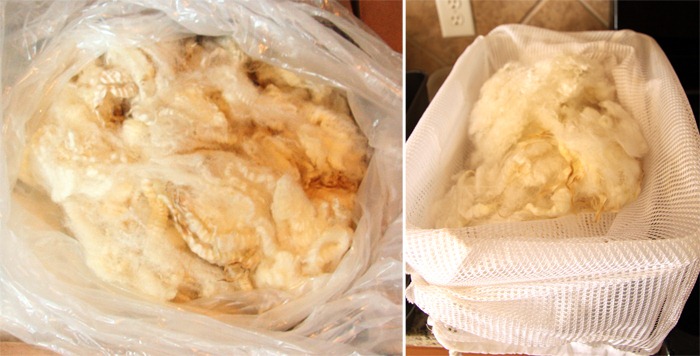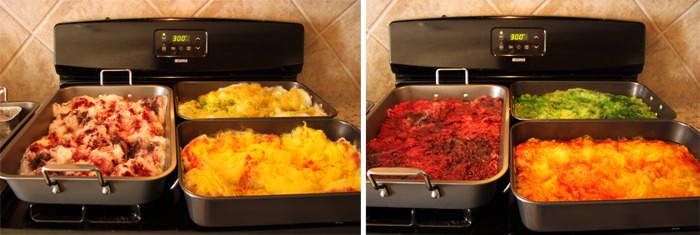Best month evar, reason #4: I decided to try buying raw wool again. Even though I’ve had terrible experiences in the past, this time it worked out PERFECTLY!
I bought 2 jacketed fleeces (Shetland and Shetland x Coopworth) and they were so beautiful and clean. I held a pile of it in my lap for a minute while wearing shorts, and my legs are now magically super soft and lanolin-ized. If only I didn’t mind smelling like a sheep, I would use this stuff as an all-purpose moisturizer.

^ Before & After. One soak was all it took to clean the grease out, and on the second soak the water was clear! There was no VM to speak of, and I am now hooked on coated fleece.

When I dye locks, I like to just sprinkle dye powder on top of the wet wool (^ left) and then I add more water & vinegar and gently smash it down with the backside of a large spoon until the dye gets wet and mixes (^ right). Pouring pre-mixed dyes gives an even, consistent (BORING!) color, so I prefer this method because it gives me some nice lights & darks. I always make sure to stuff a little “too much” into the pan, so the fiber on top gets saturated while the fiber on the bottom is usually a bit more pale. Then they get baked in the oven at 300 degrees for 45 minutes and left in place until they’re cool.

My drying screen was made by ripping the canvas off an old painting and re-covering it with nylon mesh from the hardware store. It sits flat on top of a fold-out laundry drying rack. If you want to make your own without ruining a perfectly good painting canvas, art supply stores usually sell the stretcher bars individually and you can create any size that will fit in your tub or drying area. If you need heavy duty, they also sell rolls of metal screen-like the kind on a screen door.